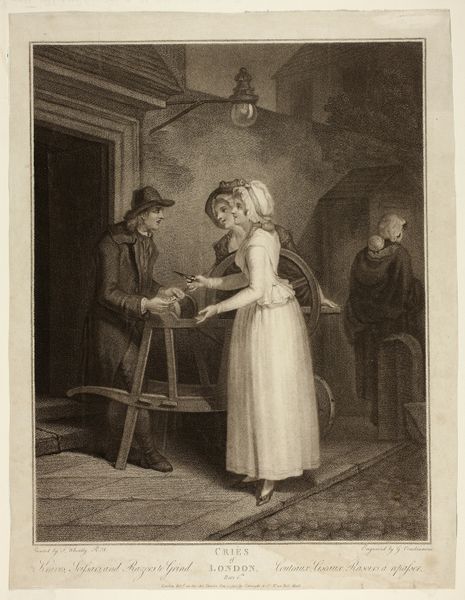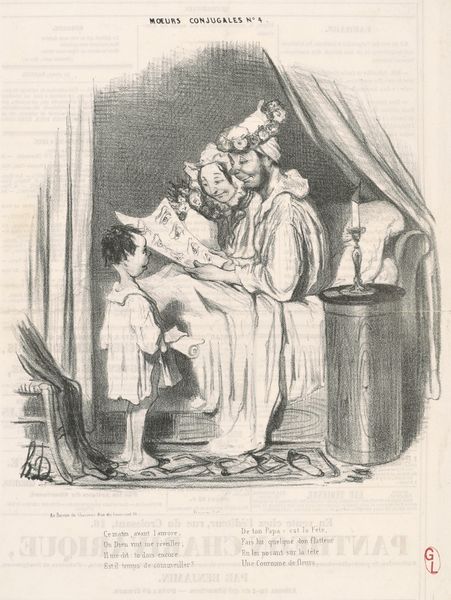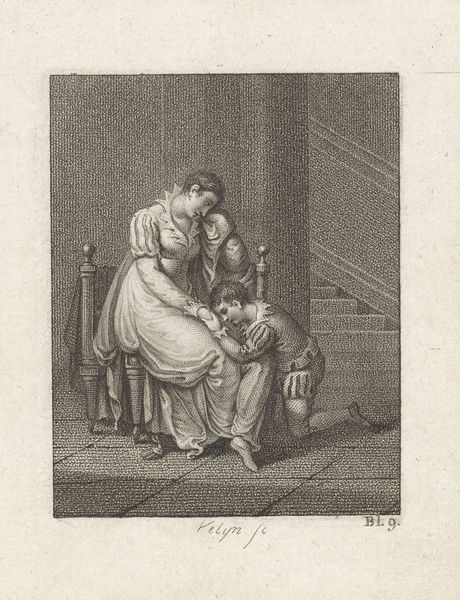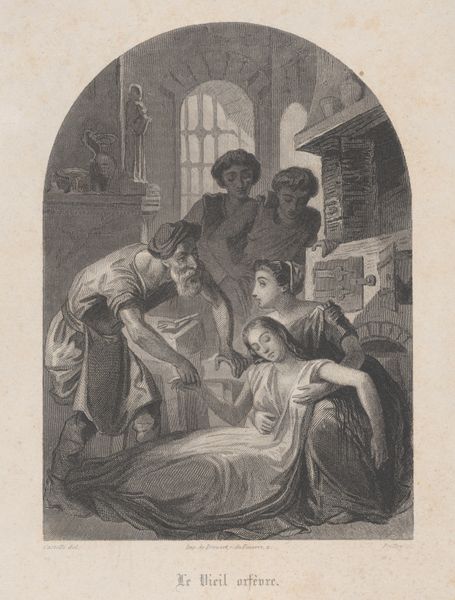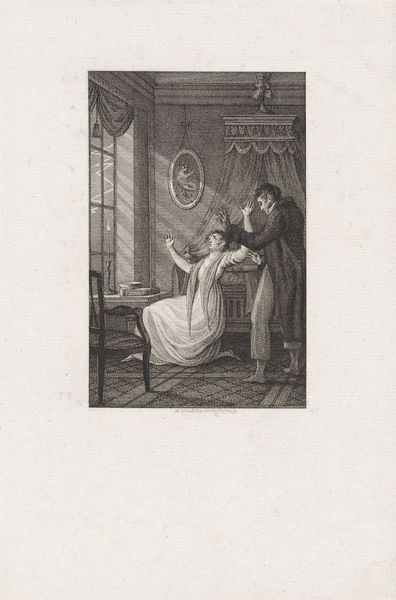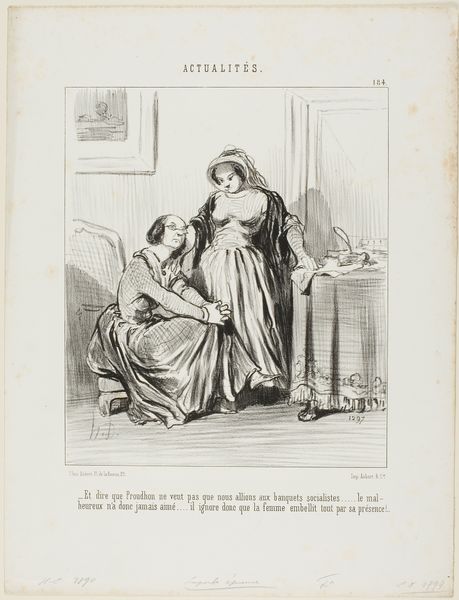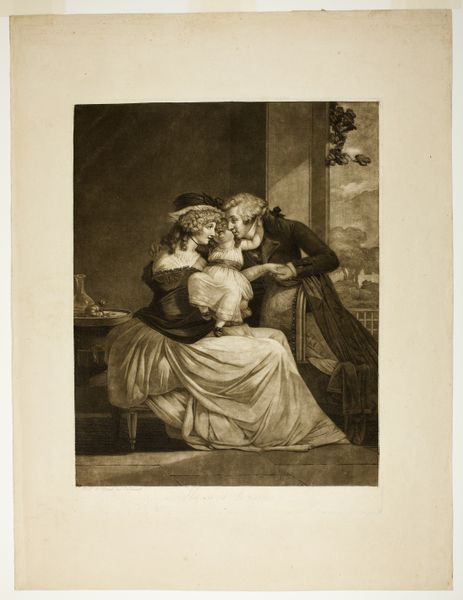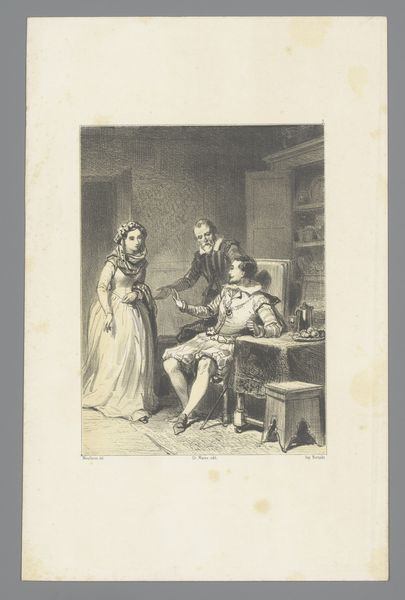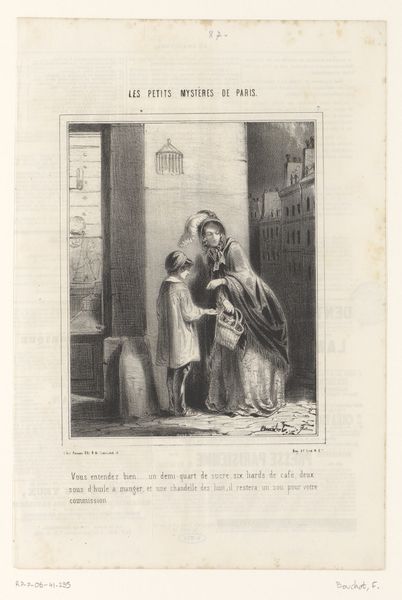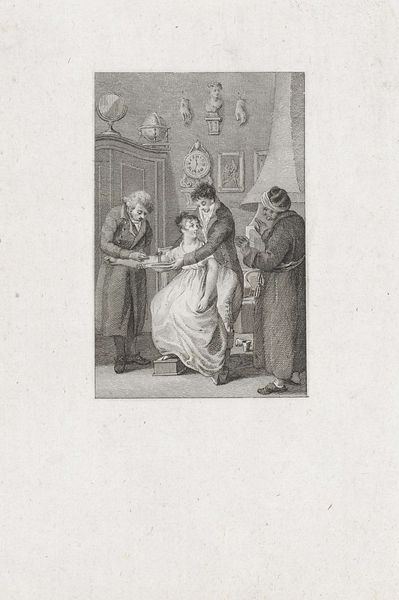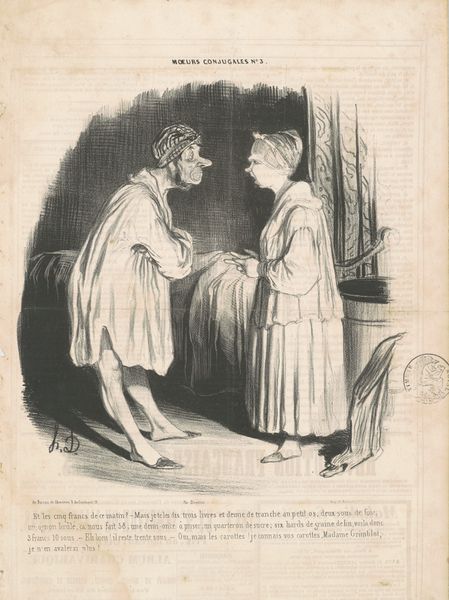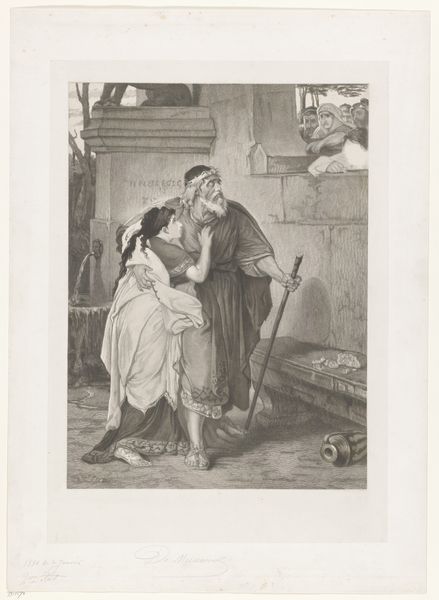
New Mack'rel, New Mackrel, Plate 5 from The Cries of London 1795
0:00
0:00
Dimensions: 448 × 376 mm
Copyright: Public Domain
Curator: Let’s consider this engraving, “New Mack'rel, New Mackrel, Plate 5 from The Cries of London," dating back to 1795, crafted by Francis Wheatley. It resides here at the Art Institute of Chicago. What’s your first take on it? Editor: Honestly? It feels…domestic. Like a captured moment from a Jane Austen novel. The light's soft, the figures are engaged, but there’s this subtle tension, maybe over the price of fish! Curator: Exactly. This piece, part of a larger series, dives into the lives of London’s street vendors. It attempts to provide insight into the laboring class through its representation. The composition, almost staged, speaks volumes about class dynamics in Georgian England. Think of how gender influences women’s labor and buying power. Editor: I see what you mean about staging. The way the figures are arranged almost feels… curated, right? There's the seller in shadow and earth tones, grounded by that basket, and the buyer steps into light from a nice-looking door. It reads into their relative social and financial standings pretty effortlessly. Curator: Precisely. Wheatley is subtly commenting on the hierarchies that govern everyday interactions. Who holds power in this exchange? What unspoken rules exist between the vendor and the woman in the doorway? And what labor conditions were considered “proper”? These are some threads that weave into these themes. Editor: I love how it humanizes a historical transaction. Beyond the historical record or a moralizing narrative, there is just a sales exchange. A transaction between people and all the human emotion that could be involved. Curator: And there's the politics of display, too. Consider who has the resources to consume and circulate these kinds of images of the poor, the street criers, if not those occupying spaces of power and privilege in that society. It also calls into question: who gets to depict whom and to what end? Editor: You’re right, it flips that script. Instead of a grandiose historical painting, we get a sliver-of-life portrayal of two women negotiating mackerel. It does spark curiosity and consideration for how many people in those conditions did not ever find themselves captured within such artistry. Curator: Indeed. What began as a glimpse into the past opens up much larger, more complicated questions about power, representation, and value. Editor: The painting helps remind me, in the simplest yet also complex ways, that art’s always so much more than meets the eye, isn't it?
Comments
No comments
Be the first to comment and join the conversation on the ultimate creative platform.
